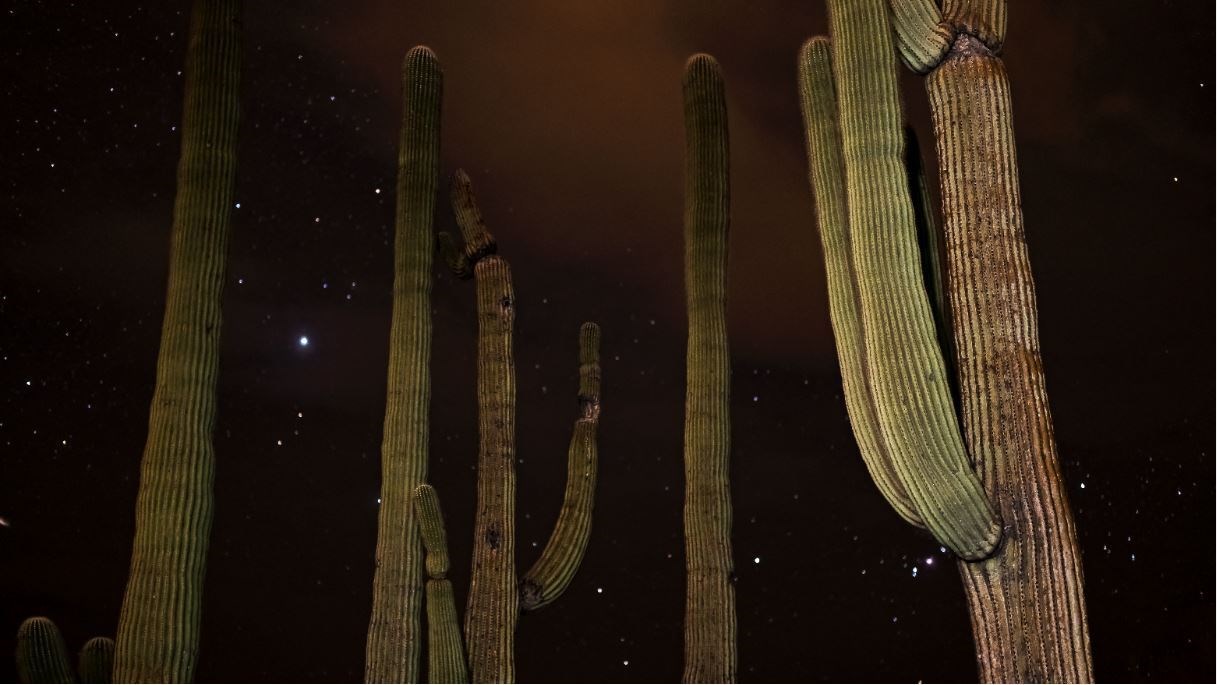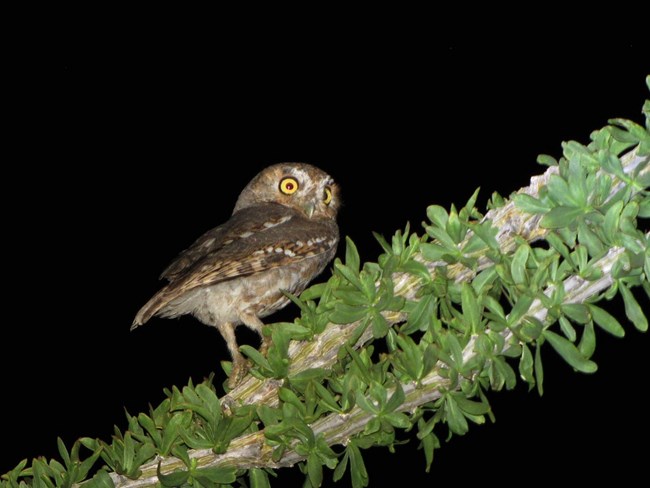|
When was the last time you looked at the stars? An uninterrupted night sky is something that is becoming increasingly rarer to encounter. Saguaro National Park is a destination for dark and starry skies. In 2023, the International Dark Sky Association certified Saguaro National Park as an Urban Night Sky Place—only the ninth in the world and the second in the National Park system! Learn more about Saguaro's certification by reading our news release. 
NPS Photo Why Protect the Night Sky?By preserving darkness in the park, we are also preserving the livelihood of the ecosystem. All kinds of life rely on the natural cycle of light and dark. This circadium rhythm governs life-sustaining behaviors such as hunting, reproduction, sleep, and protection from predators. 
NPS Photo Light PollutionLight pollution refers to human-made light that alters or disrupts natural light. If you are in an urban area, you will notice the affects of light pollution as a glow that grows up from the horizon. Light pollution is easy to see at night, and it is especially prevalent in urban areas. Light pollution affects wildlife, ecosystems, human health and climate change. Life at NightIn the Sonoran Desert, many of our plants and animals become active when the sun goes down. Many species rely on the light of the moon and stars at night for survival. Darkness informs life in a number of ways, such as when humans know to go to sleep, when bats search for food, or when the saguaro cactus opens its flowers to be pollinated. Interruption of this natural light can have negative effects on the wildlife at Saguaro National Park. Many animals are adapted to the night, dawn, or dusk, and their reliance on darkness is crucial to their overall well-being. These are animals such as scorpions, javelinas, and mountain lions. Oh my! Stargazing at SaguaroLooking to experience the starry nights in the park? Both districts offer a number of locations you can visit to celebrate the night sky. While many of the park's trails are not accessible after the gates close at 8 pm, winters in the Sonoran Desert offer hours of darkness before the night gets late. Rincon Mountain DistrictCactus Forest Drive: Take a cruise on this 8-mile scenic loop drive! As you go, there are multiple overlooks and pullouts along the way where you can park to admire the stars. Tucson Mountain DistrictBajada Loop Drive: Walking along this 5-mile, unpaved route, at night will give you access to wonderful views with scenic views and picnic areas to stop at along the way (The loop drive is closed to vehicles from dusk to dawn). Visitors may also walk down the Golden Gate Multi-Use Trail starting from the pullout along Picture Rocks Rd. How You Can HelpThere are many ways you can do your part in keeping the night dark! Learn some of the best practices for preserving the night sky. Dark Sky EventsSaguaro National Park offers a number of dark sky programs such as star parties and night hikes. Check out our calendar for a full list of events. |
Last updated: February 26, 2024
